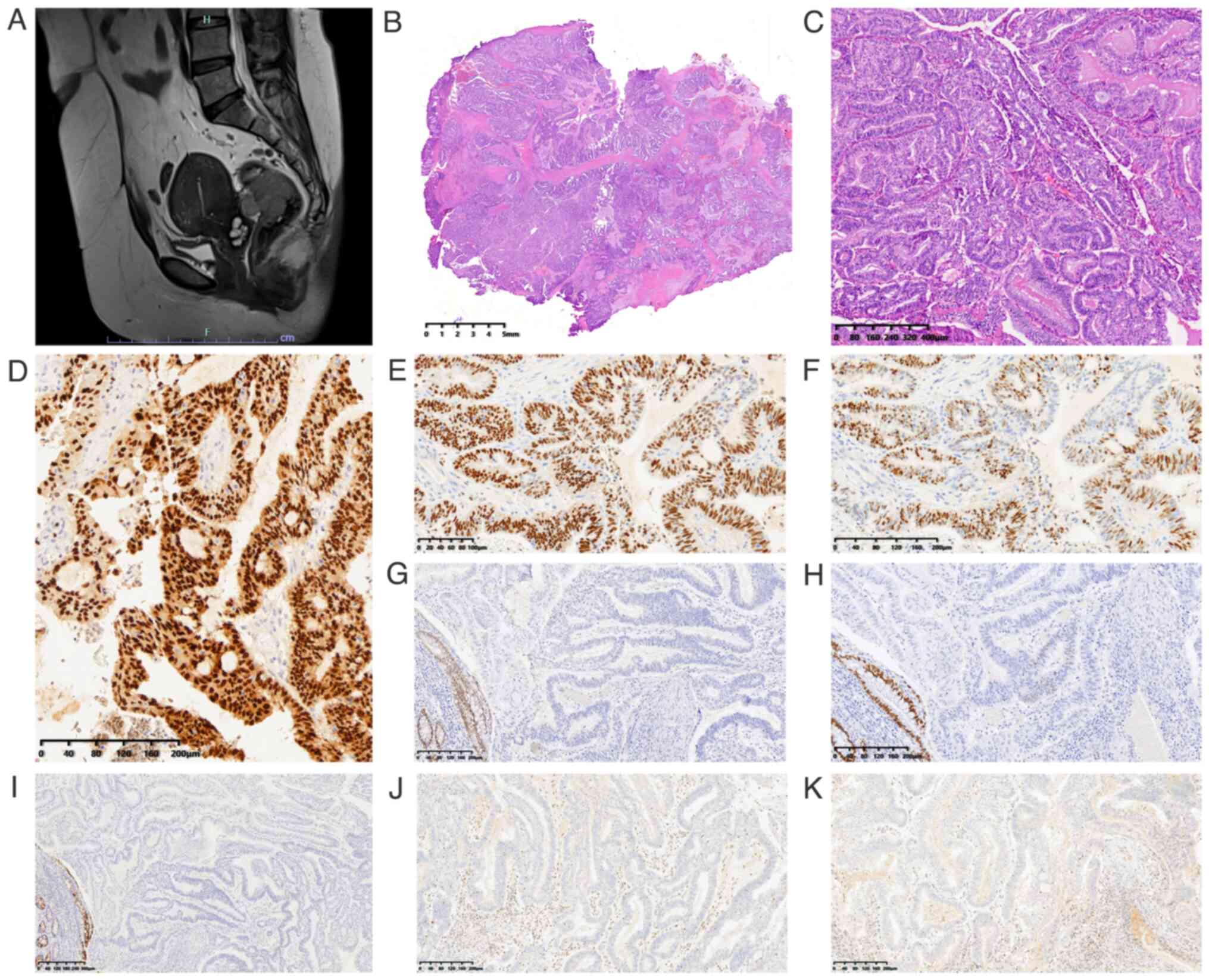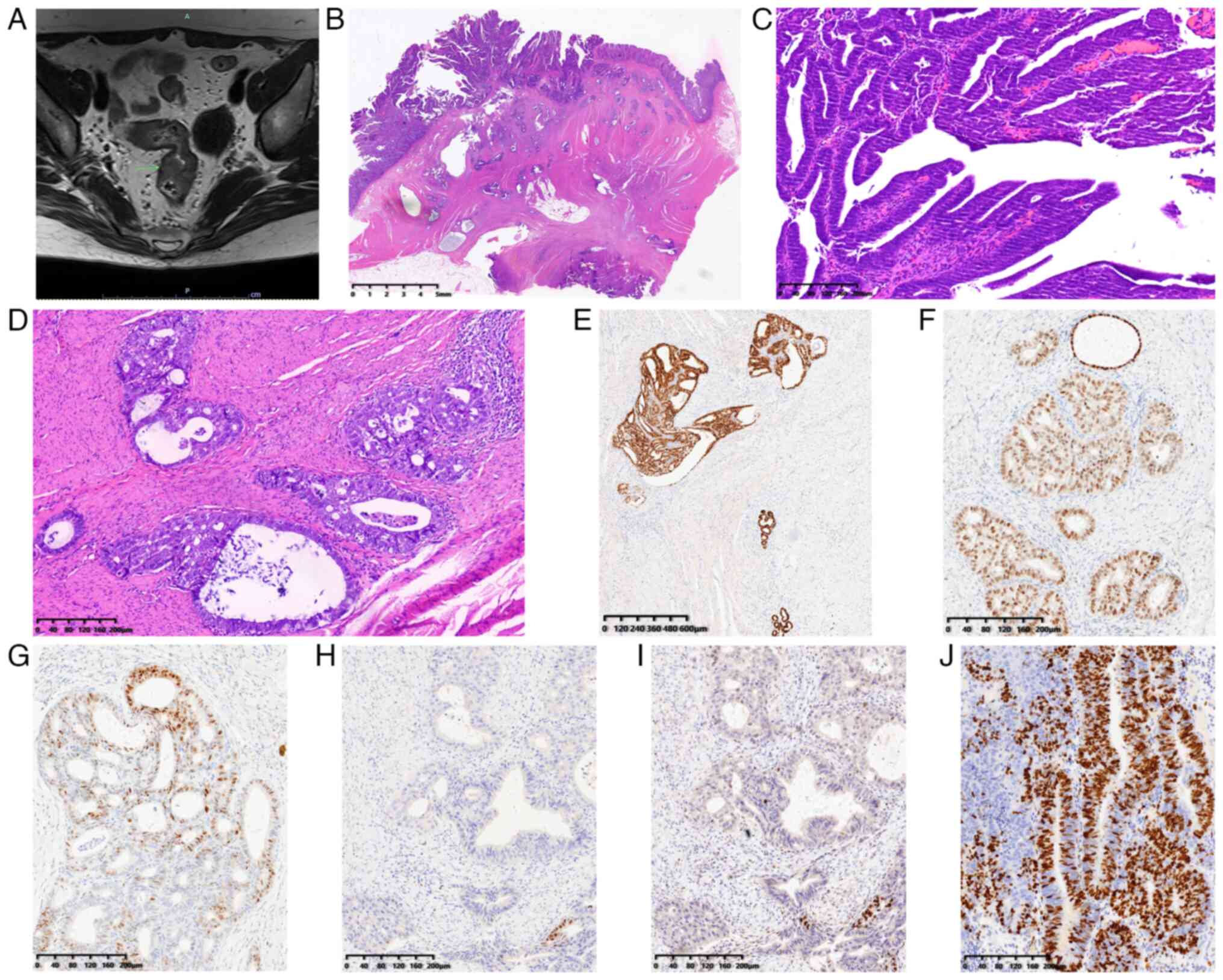|
1
|
Simoens S, Dunselman G, Dirksen C,
Hummelshoj L, Bokor A, Brandes I, Brodszky V, Canis M, Colombo GL,
DeLeire T, et al: The burden of endometriosis: Costs and quality of
life of women with endometriosis and treated in referral centres.
Hum Reprod. 27:1292–1299. 2012. View Article : Google Scholar : PubMed/NCBI
|
|
2
|
Taylor HS, Kotlyar AM and Flores VA:
Endometriosis is a chronic systemic disease: Clinical challenges
and novel innovations. Lancet. 397:839–852. 2021. View Article : Google Scholar : PubMed/NCBI
|
|
3
|
Stern RC, Dash R, Bentley RC, Snyder MJ,
Haney AF and Robboy SJ: Malignancy in endometriosis: Frequency and
comparison of ovarian and extraovarian types. Int J Gynecol Pathol.
20:133–139. 2001. View Article : Google Scholar : PubMed/NCBI
|
|
4
|
Pearce CL, Templeman C, Rossing MA, Lee A,
Near AM, Webb PM, Nagle CM, Doherty JA, Cushing-Haugen KL, Wicklund
KG, et al: Association between endometriosis and risk of
histological subtypes of ovarian cancer: A pooled analysis of
case-control studies. Lancet Oncol. 13:385–394. 2012. View Article : Google Scholar : PubMed/NCBI
|
|
5
|
Benoit L, Arnould L, Cheynel N, Diane B,
Causeret S, Machado A, Collin F, Fraisse J and Cuisenier J:
Malignant extraovarian endometriosis: A review. Eur J Surg Oncol.
32:6–11. 2006. View Article : Google Scholar : PubMed/NCBI
|
|
6
|
Sampson JA: Endometrial carcinoma of the
ovary, arising in endometrial tissue of that organ. Arch Surg.
10:1–72. 1925. View Article : Google Scholar
|
|
7
|
Scott RB: Malignant changes in
endometriosis. Obstet Gynecol. 2:283–289. 1953.PubMed/NCBI
|
|
8
|
Gadducci A and Zannoni GF:
Endometriosis-associated extraovarian malignancies: A challenging
question for the clinician and the pathologist. Anticancer Res.
40:2429–2438. 2020. View Article : Google Scholar : PubMed/NCBI
|
|
9
|
Thomas EJ and Campbell IG: Molecular
genetic defects in endometriosis. Gynecol Obstet Invest. 50 (Suppl
1):S44–S50. 2000. View Article : Google Scholar
|
|
10
|
Sapalidis K, Machairiotis N, Zarogoulidis
P, Vasilakaki S, Sardeli C, Koimtzis G, Pavlidis E, Katsaounis A,
Giannakidis D, Michalopoulos N, et al: Genes' interactions: A major
contributor to the malignant transformation of endometriosis. Int J
Mol Sci. 20:18422019. View Article : Google Scholar : PubMed/NCBI
|
|
11
|
Zhao K, Zhao T, Yang R, Liu J and Hu M:
Peroxiredoxin 2 as a potential prognostic biomarker associated with
angiogenesis in cervical squamous cell cancer. Oncol Lett.
28:3282024. View Article : Google Scholar : PubMed/NCBI
|
|
12
|
Del Vecchio F, Mastroiaco V, Di Marco A,
Compagnoni C, Capece D, Zazzeroni F, Capalbo C, Alesse E and
Tessitore A: Next-generation sequencing: Recent applications to the
analysis of colorectal cancer. J Transl Med. 15:2462017. View Article : Google Scholar : PubMed/NCBI
|
|
13
|
Ponz de Leon M and Di Gregorio C:
Pathology of colorectal cancer. Dig Liver Dis. 33:372–388. 2001.
View Article : Google Scholar : PubMed/NCBI
|
|
14
|
Kir G, Gurbuz A, Karateke A and Kir M:
Clinicopathologic and immunohistochemical profile of ovarian
metastases from colorectal carcinoma. World J Gastrointest Surg.
2:109–116. 2010. View Article : Google Scholar : PubMed/NCBI
|
|
15
|
Arakawa T, Fukuda S, Hirata T, Neriishi K,
Wang Y, Takeuchi A, Saeki A, Harada M, Hirota Y, Matsumoto T, et
al: PAX8: A highly sensitive marker for the glands in extragenital
endometriosis. Reprod Sci. 27:1580–1586. 2020. View Article : Google Scholar : PubMed/NCBI
|
|
16
|
Smith D, Stewart CJR, Clarke EM, Lose F,
Davies C, Armes J, Obermair A, Brennan D, Webb PM, Nagle CM and
Spurdle AB: ER and PR expression and survival after endometrial
cancer. Gynecol Oncol. 148:258–266. 2018. View Article : Google Scholar : PubMed/NCBI
|
|
17
|
Werling RW, Yaziji H, Bacchi CE and Gown
AM: CDX2, a highly sensitive and specific marker of adenocarcinomas
of intestinal origin: An immunohistochemical survey of 476 primary
and metastatic carcinomas. Am J Surg Pathol. 27:303–310. 2003.
View Article : Google Scholar : PubMed/NCBI
|
|
18
|
Magnusson K, de Wit M, Brennan DJ, Johnson
LB, McGee SF, Lundberg E, Naicker K, Klinger R, Kampf C, Asplund A,
et al: SATB2 in combination with cytokeratin 20 identifies over 95%
of all colorectal carcinomas. Am J Surg Pathol. 35:937–948. 2011.
View Article : Google Scholar : PubMed/NCBI
|
|
19
|
Lott JV, Rubin RJ, Salvati EP and Salazar
GH: Endometrioid carcinoma of the rectum arising in endometriosis:
Report of a case. Dis Colon Rectum. 21:56–60. 1978. View Article : Google Scholar : PubMed/NCBI
|
|
20
|
Jones KD, Owen E, Berresford A and Sutton
C: Endometrial adenocarcinoma arising from endometriosis of the
rectosigmoid colon. Gynecol Oncol. 86:220–222. 2002. View Article : Google Scholar : PubMed/NCBI
|
|
21
|
Takeuchi K, Yamanaka Y, Hamana S, Ohara N
and Maruo T: Invasive adenocarcinoma arising from uterine
adenomyosis involving the rectosigmoid colon. Int J Gynecol Cancer.
14:1004–1006. 2004. View Article : Google Scholar : PubMed/NCBI
|
|
22
|
Kobayashi S, Sasaki M, Goto T, Asakage N,
Sekine M, Suzuki T, Tsukada K, Yamasaki S and Ukawa S: Endometrioid
adenocarcinoma arising from endometriosis of the rectosigmoid. Dig
Endos. 22:59–63. 2010. View Article : Google Scholar
|
|
23
|
García-Marín JA, Pellicer-Franco EM,
Soria-Aledo V, Mengual-Ballester M, Valero-Navarro G and
Aguayo-Albasini JL: Malignant degeneration of rectal endometriosis.
Rev Esp Enferm Dig. 107:761–763. 2015.PubMed/NCBI
|
|
24
|
Palla VV, Karaolanis G, Bliona T,
Katafigiotis I, Anastasiou I and Hassiakos D: Endometrioid
adenocarcinoma arising from colon endometriosis. SAGE Open Med Case
Rep. 5:2050313X177452042017.PubMed/NCBI
|
|
25
|
Li N, Zhou W, Zhao L and Zhou J:
Endometriosis-associated recto-sigmoid cancer: A case report. BMC
Cancer. 18:9052018. View Article : Google Scholar : PubMed/NCBI
|
|
26
|
Yang H, Gu JJ, Qi Y, Zhao W and Wang XL:
Endometrioid adenocarcinoma of the rectovaginal septum with
invasion of the rectum: A case report and review of literature.
World J Surg Oncol. 17:2062019. View Article : Google Scholar : PubMed/NCBI
|
|
27
|
Li B, Wang Y, Wang Y, Li S and Liu K: Deep
infiltrating endometriosis malignant invasion of cervical wall and
rectal wall with lynch syndrome: A rare case report and review of
literature. Front Oncol. 12:8322282022. View Article : Google Scholar : PubMed/NCBI
|
|
28
|
Ulrich U, Rhiem K, Kaminski M, Wardelmann
E, Trog D, Valter M and Richter ON: Parametrial and rectovaginal
adenocarcinoma arising from endometriosis. Int J Gynecol Cancer.
15:1206–1209. 2005. View Article : Google Scholar : PubMed/NCBI
|
|
29
|
Knisely A, Huang Y, Li Y, Prabhu VS and
Wright JD: Adjuvant and first line chemotherapy use for endometrial
cancer. Gynecol Oncol Rep. 41:1010022022. View Article : Google Scholar : PubMed/NCBI
|













